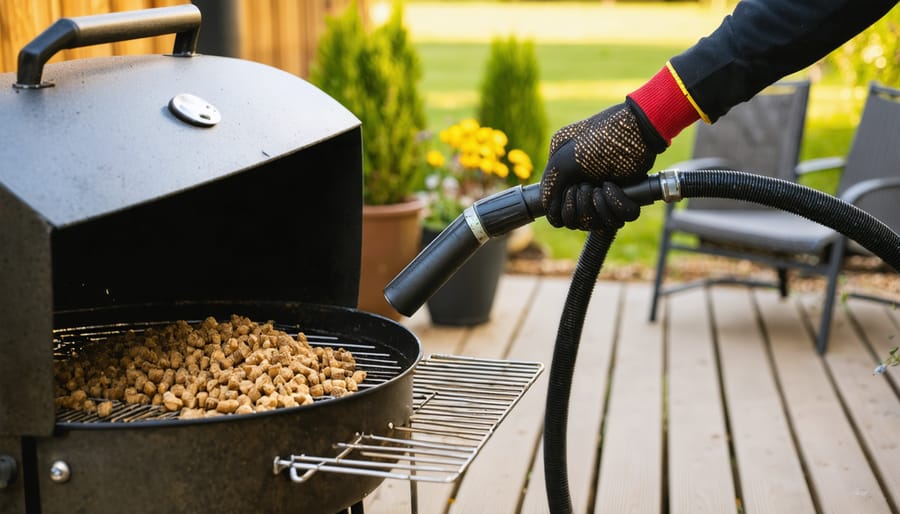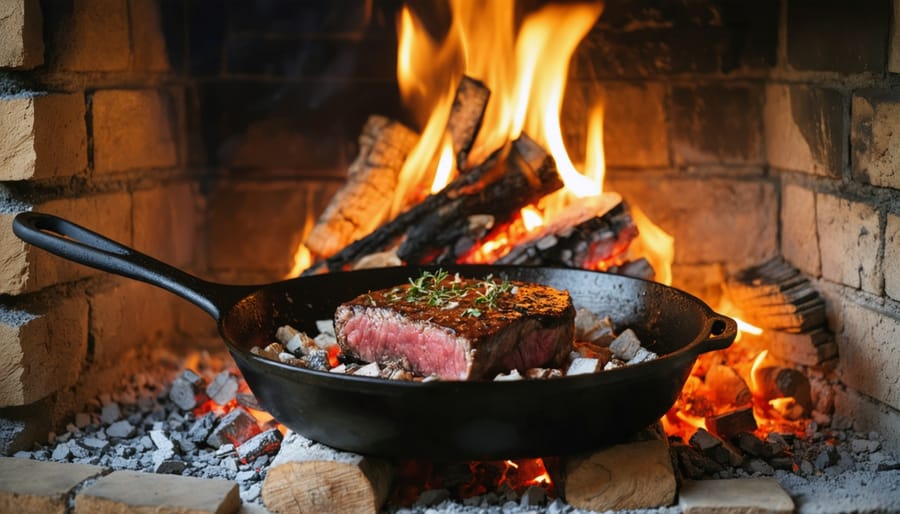If you have a fireplace in your home, you know how comforting and cozy it can be on a cold winter night. But do you know what each part of your fireplace and chimney does to keep you and your home safe?
In this article, we’ll look closer at the various components of a fireplace and chimney and their function.
Understanding the Parts of a Fireplace and Their Function
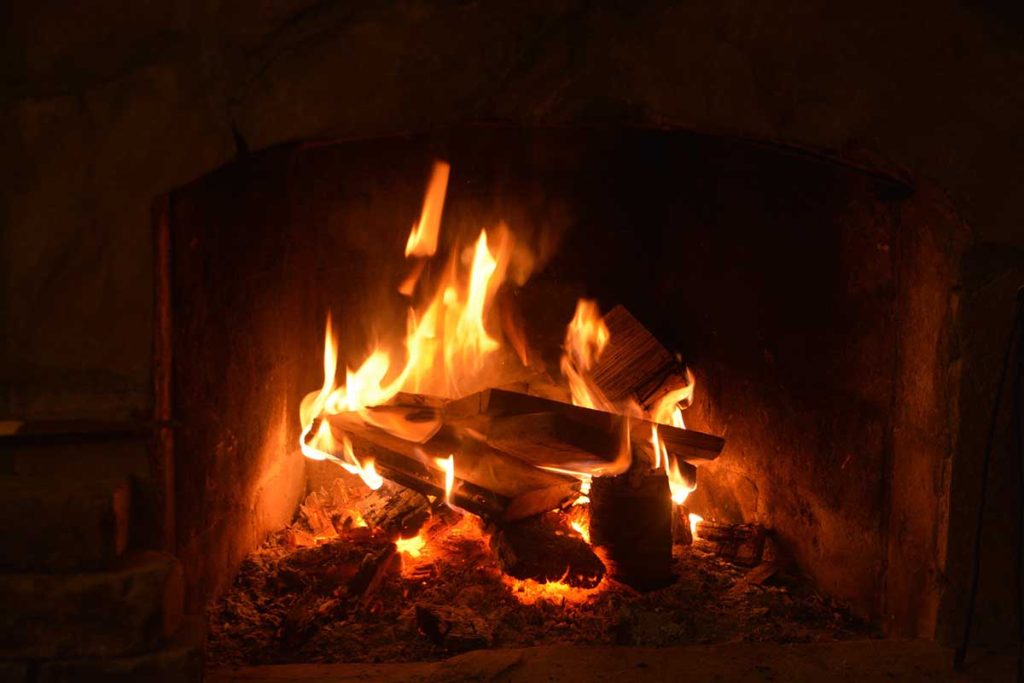
A fireplace comprises multiple components that synergistically contribute to creating a warm and cozy ambiance within your home.
Here’s a quick overview of the main components and their functions:
Cap and Damper
The cap and damper are two important components of a fireplace and chimney system. The cap sits on top of the chimney and serves as a cover to keep out rain, snow, and debris. It also helps to prevent animals from getting into the chimney.
The damper, on the other hand, is a movable plate that sits above the firebox and controls the cold air flow through the chimney.
Closing the damper effectively prevents warm air from escaping through the chimney and vent pipe, thus aiding in maintaining a stable temperature inside the home. When it’s open, it allows smoke and gases to escape.
It’s important to make sure that both the cap and damper of open fireplace are functioning properly to ensure that your fireplace and chimney are working efficiently and safely.
Crown and Mantel
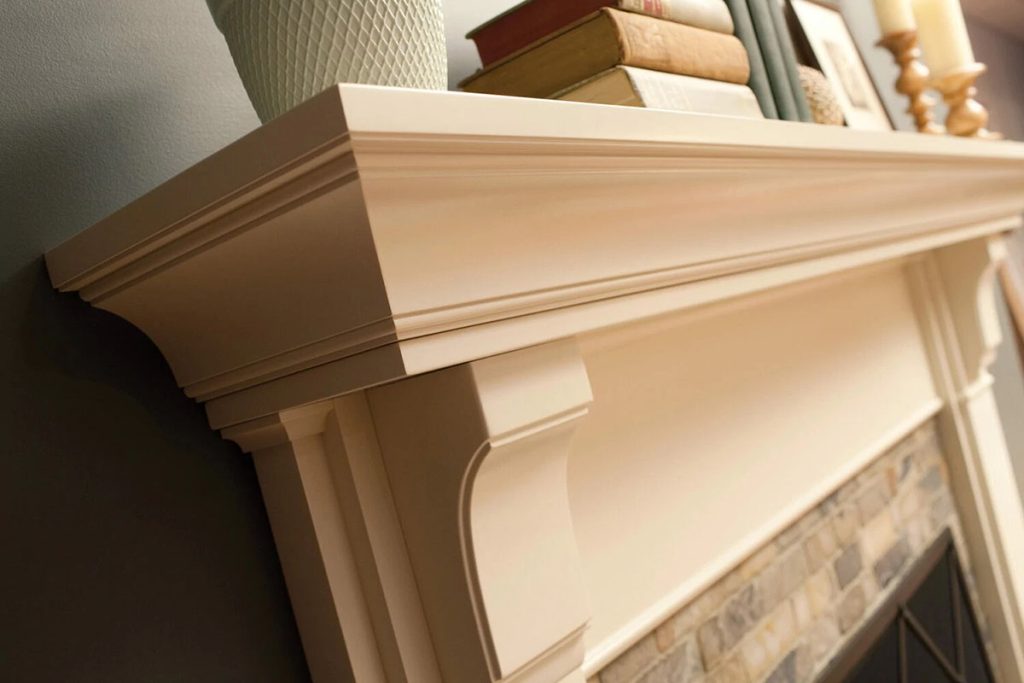
The crown and mantel are essential components of a fireplace, serving both functional and decorative purposes. The crown seals the chimney’s top to prevent water damage, while the decorative feature of the mantel provides a decorative shelf above the fireplace.
To maintain the crown in good condition, regular inspections are necessary. The mantel, on the other hand, can be constructed from a variety of materials and serves as a platform for displaying decorative items.
Together, they create an attractive and functional design for your fireplace.
Firebox
The firebox opening refers to the designated area where the fire is built within the fireplace. The firebox, typically made from robust materials like brick or metal, is purposefully engineered to withstand the intense temperatures produced by the fire.
Mantel
The fireplace mantel, positioned as a shelf above the fireplace, can be crafted from materials like wood, stone, or other options. It serves a dual purpose, combining both decorative and functional elements, providing an ideal space to showcase family photos and other cherished items.
Screen
A screen is a metal mesh that covers the opening of the electric fireplaces. It prevents sparks and embers from flying out into the room and causing a fire.
Flue Offsets
The flue is the vertical channel inside the chimney that carries smoke and gases out of the house. It’s important to make sure that the flue is clean and free of debris to ensure proper air flow.
Hearth
The hearth is the area directly in front of the fireplace where the fire burns. Usually constructed from brick or stone, the hearth serves a dual purpose of functionality and aesthetics. Its primary function is to provide protection to the surrounding area from heat and flames.
Additionally, the hearth can be utilized as a seating or gathering area, further enhancing its versatility and appeal.
Flashing
Flashing, a thin metal component, plays a crucial role in safeguarding the chimney and roof against water damage. Positioned at the base of the chimney, it serves the purpose of diverting water away from the chimney and onto the roof.
Regular inspections of the flashing are essential to verify its good condition and to prevent any water seepage into the chimney or roof. This maintenance practice ensures optimal protection and helps maintain the integrity of the chimney and roof structure.
Chimney Throat
The chimney throat is the fireplace opening at the top of the firebox that leads into the chimney. It’s one of the important parts of a fireplace, metal box and chimney system because it helps to regulate the airflow through the chimney.
The throat should be inspected regularly to ensure that it’s free of debris and functioning properly.
Glass or Screen Door
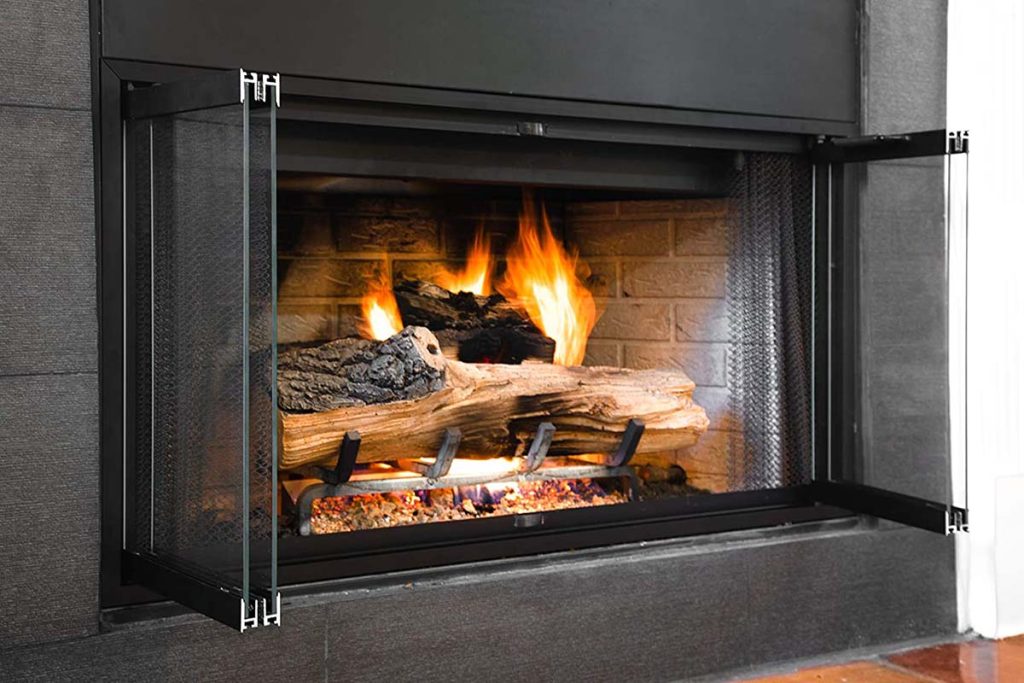
Glass or screen doors are often added to gas fireplace to improve safety and energy efficiency. They provides a barrier between the fire and the room, helping to prevent sparks and embers from flying out and causing a fire.
Screen doors are a less expensive option that still provides some protection from sparks and embers while allowing more heat to radiate into the room.
Lintel
The lintel is a horizontal beam that supports the masonry above the and firebox opening. There are essential parts of a fireplace and chimney system because it helps to distribute the weight of the masonry and prevent cracks and other types of damage.
Regular inspections of the lintel are important to confirm its good condition and to identify any signs of wear or stress.
Damper
The damper, located either in the fireplace or chimney, serves as a movable plate that regulates the airflow within the chimney. It is commonly found at the top of the firebox and can be operated through a lever or chain mechanism.
When starting a fire, it is important to open the damper, allowing the escape of smoke and gases. On the other hand, closing the damper after extinguishing the fire effectively prevents drafts from entering the house.
Properly using the damper ensures efficient ventilation and enhances energy efficiency within the fireplace and chimney system.
Chimney Cap
The chimney cap is a protective cover that sits on top of the chimneys. It’s designed to keep rain, snow, and debris from entering the chimney while still allowing smoke and gases to escape.
Chimney caps can also help prevent animals from nesting in the chimneys. Regular inspections are essential to verify the good condition of the chimney cap and confirm that it effectively prevents the entry of water and debris into the chimney.
Fireplace Insert
A fireplace insert is a device that’s installed inside an existing fireplace to improve its efficiency. Inserts are typically made of cast iron or steel and can burn wood, gas, or pellets.
They can help to reduce energy costs by up to 40% by capturing and radiating more heat into the room.
Inserts should be installed by a professional and properly maintained to ensure that they’re functioning safely and efficiently.
Back Panel
The back panel is the vertical surface at the back of the firebox that’s often made of refractory materials like brick or ceramic. It helps to protect the back wall and floor of the fireplace from heat and flames, and also reflects heat back into the room.
Regular inspections of the back panel are crucial to ensure its good condition and identify any signs of damage or wear.
7 Different Types of Fireplaces
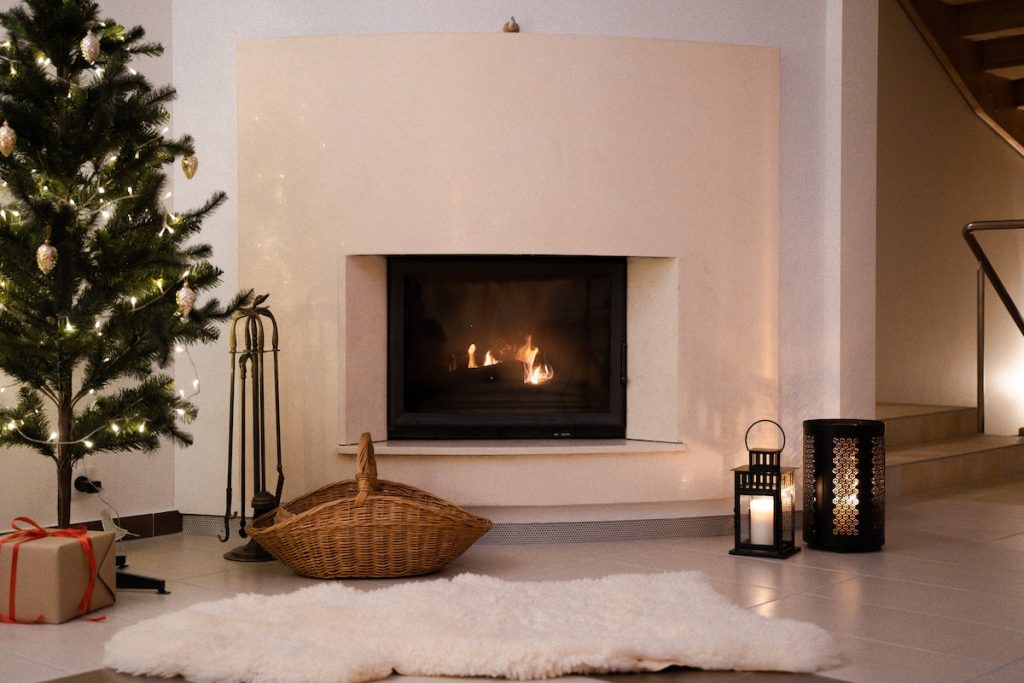
Fireplaces come in many different styles durable materials and designs, including:
- Wood-Burning Fireplaces
- Gas Fireplace
- Electric Fireplaces
- Ethanol Fireplace
- Pellet Stoves
- Masonry Fireplace
- Outdoor Fireplace
Fireplace Inserts
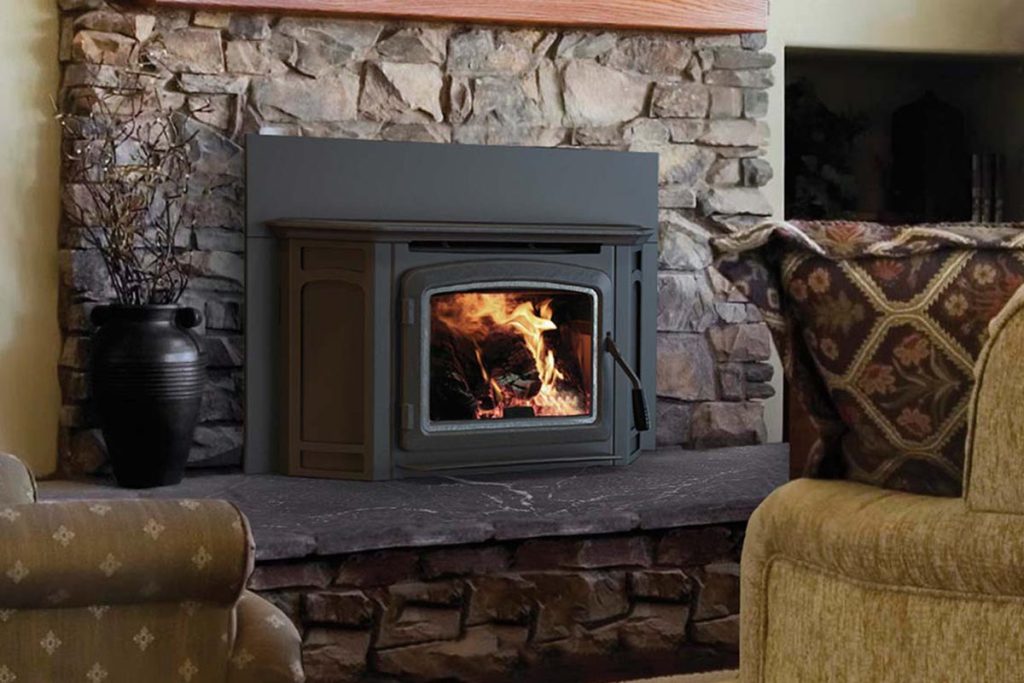
Fireplace inserts are a popular choice for many homeowners who want to improve the efficiency of their fireplace. Inserts are available in a variety of materials, such as cast iron, steel, or soapstone, and offer the flexibility to burn wood, natural gas, or pellets.
Inserts fit flawlessly into pre-existing fireplace openings, offering the added advantage of potentially reducing energy costs by up to 40%. They are also safer than traditional wood burning fireplaces, as they contain the fire within a sealed chamber.
Smoke Chamber
The smoke chamber is the space above the firebox where smoke and gases collect before entering the flue. It’s important to keep this area clean and free of debris to ensure proper airflow.
Ash Dump
The ash dump is a small opening in the bottom of the firebox that allows you to easily remove ashes gas logs and debris from the wood burning fireplace.
Make Sure Your Chimney Is in Good Condition
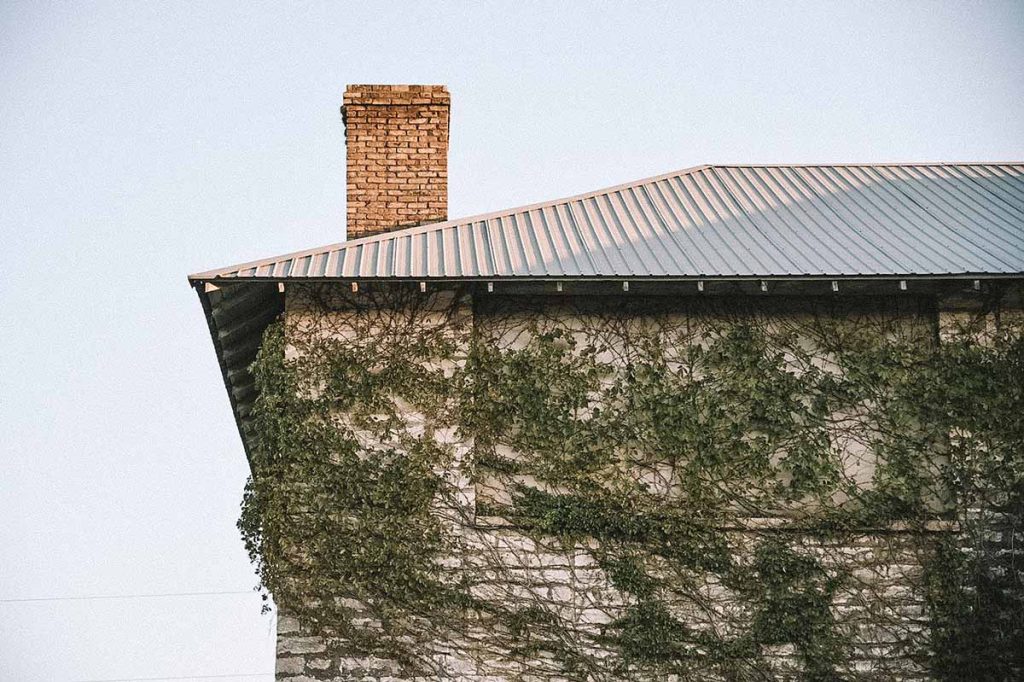
It’s important to ensure that your chimney is in good condition to prevent potential hazards like fires and carbon monoxide poisoning.
Regular inspections and maintenance can help to identify and address any issues before they become more serious problems.
A professional chimney sweep should inspect and clean your chimney annually to ensure that it’s functioning safely and efficiently.
Smoke shelf
The smoke shelf is a flat area located at the top of the smoke chamber that helps to collect any falling debris and prevent it from blocking the flue.
The smoke shelf and chimney system play vital roles in effectively venting smoke and gases out of the house. Regular inspections of the smoke shelf are necessary to confirm its functionality and ensure it remains free of debris.
Ash Pit
The ash pit is a smoke chamber beneath the firebox where ashes and debris collect. It’s important to clean out the ash pit regularly to prevent a buildup of flammable materials.
Ash Clean-Out Door
The ash clean-out door is a small metal door located in the basement or crawlspace of the house that provides access to the ash pit. The ash clean-out door, typically situated near the lower section of a fireplace below the chimney, serves the purpose of removing ash and debris.
Regular inspections of the ash clean-out door are essential to verify its proper functionality and to ensure it does not permit drafts to enter the house. This maintenance practice ensures optimal performance and prevents any potential disruptions caused by drafts.
Glass Doors
Glass doors are a popular addition to wood burning fireplaces as they provide a barrier between the fire and the room, helping to prevent sparks and embers from flying out and causing a fire.
These glass doors can also improve the efficiency of the many fireplaces by radiating more heat into the room. Regular cleaning is essential to keep them free of soot and debris, ensuring their optimal functionality and appearance.
Chimney Crown
The chimney crown is the flat surface located at the top of the chimney that helps to keep water and debris from entering the chimney.
Usually constructed with concrete blocks, the chimney crown should undergo regular inspections to verify its good condition and to prevent the entry of water or debris into the chimney.
Cleanout Door
A cleanout door is an access point that allows homeowners or chimney professionals to clean the chimney from the inside. Conveniently situated just above the ash dump, the access door is located at the bottom of the chimney.
This location allows for effortless opening and grants easy access to the clean-out opening for maintenance purposes. A cleanout door is an essential component of a chimney as it allows for regular maintenance and inspection of the chimney’s interior.
Clean-Out Opening
A clean-out opening is an access point located at the bottom of the chimney that allows homeowners or chimney professionals to clean out debris and ash that has accumulated inside the chimney.
To access the clean-out opening, you can remove the cleanout door, usually positioned just above the opening.
Regular cleaning of the clean-out opening is crucial for maintaining the health and safety of your chimney and ensuring that it functions correctly.
Safety tips with fireplace
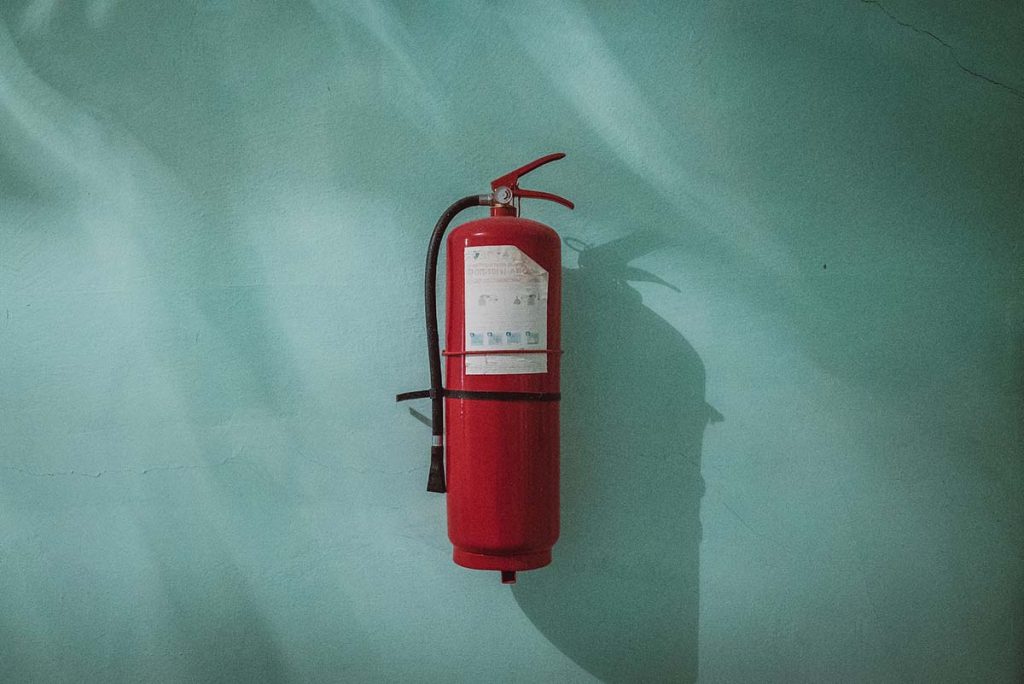
While a fireplace can provide warmth and comfort to a home, it can also be a potential hazard if not used correctly. To ensure the safety of your fireplace surround your family and property, follow these fireplace safety tips:
- Keep the area around the fireplace clear of flammable materials, including furniture, rugs, and curtains.
- Use a screen or glass door to prevent sparks and embers from escaping the fireplace.
- Use only dry, well-seasoned wood, and never burn trash or other materials in the fireplace.
- Have your chimney inspected and cleaned annually by a professional chimney sweep to prevent the buildup of creosote and other hazardous materials.
- Never leave a fire unattended and always ensure that the fire is completely out before leaving the room or going to bed.
Use fire alarm
In addition to following these safety tips, it’s also essential to install smoke detectors and fire alarms in your home.
These devices can provide an early warning in the event of a fire, giving you and your family time to evacuate safely.
Test your smoke detectors and fire alarms regularly and replace batteries as needed to ensure they are working correctly.
By following these safety tips and installing smoke detectors and fire alarms, you can enjoy the warmth and comfort of your wood burning fireplace while ensuring the safety of your home and family.


